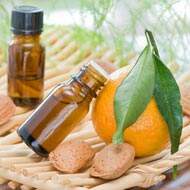- Bergamot Essential Oil
- Black Pepper Essential Oil
- Cajeput Essential Oil
- Camomile Oil
- Cedarwood Essential Oil
- Citronella Essential Oil
- Clary Sage Essential Oil
- Coriander Oil
- Lavender Essential Oil
- Rose Oil
- Eucalyptus Oil
- Fennel Essential Oil
- Frankincense Essential Oil
- Geranium Oil
- Grapefruit Oil
- Essential Oil Jasmine
- Juniper Berry Oil
- Lavandin Oil
- Lavender Oil
- Lemon Oil
- Lemongrass Oil
- Mandarin Oil
- Melissa Oil (Officinalis)
- Cypress Oil
- Aroma Essential Oil
- Aromatherapy And Essential Oils
- Avocado Oil Benefits
- Oil Healing Properties
- Essential Lemon Oil Health Benefits
- Lemongrass Essential Oil Health Benefits
- Mandarin Essential Oil Health Benefits
- Marjoram Essential Oil Health Benefits
- Massage Body Oils Health Benefits
- Melissa Essential Oil Benefits
- Essential Myrrh Oil Health Benefits
- Natural Essential Oil Health Benefits And Uses
- Neroli Essential Oil
- Niaouli Essential Oil
- Essential Oils And Uses
- Organic Essential Oils
- Patchouli Essential Oil
- Peppermint Essential Oil
- Petitgrain Essential Oil
- Rosemary Essential Oil
- Sandalwood Essential Oil
- Sandalwood Massage Oil
- Sunflower (Black) Seed Oil
- Tangerine Oil
- Tea Tree Oil Uses
- Thyme Essential Oil
- Vetiver Oil
- All Natural Oil
- Olive Oil Products
- Almond Oil For Hair,Massage,Cooking And Aromatherapy
- Best Olive Oil In The World - Reviews
- Avocado Oil
- Aromatherapy Essential Oils And Blends
- Essential Oils Aromatherapy
- Catnip Essential Oil
- Spikenard Essential Oil
- Chocolate Essential Oil
- Carrot Seed Essential Oil
- Tuberose Essential oil
- Manuka Essential Oil
- Yarrow Essential Oil
- Galbanum Essential Oil
- Linden Blossom Essential Oil
- Oregano Essential Oil
- Ravensara Essential oil
- Ylang Ylang Essential Oil
- Wintergreen Oil
- Helichrysum Oil
- Clove Oil
- Spearmint Essential Oil
- Lime Essential Oil
- Lemon Verbena Essential Oil
- How Different Are Mint Oil And Peppermint Oil?
- Vegetable Oils
Pine Essential Oil
Countries producing pine oil include Hungary, Russia, Finland and USA, where Scots Pine and other varieties of pine trees are found in abundance. Most commercially produced pine oil is extracted from trees in the Pinaceae family, also called Scots and forest pine.
The botanical name for pine oil is Pinus sylvestris.
Physical Properties
- Steam extraction of pine oil converts it into a liquid state.
- It has a fresh forest aroma and is yellow to pale yellow in color.
- Undiluted pine essential oil is highly volatile. It is insoluble in cold water; however, it does dissolve in isopropyl alcohol and blends in with other oils.
Chemical Composition
Scots pine is rich in monoterpene hydrocarbons such as α- and β-pinene, δ-3-carene, limonene, α- andγ-terpinene, (Z)-β-ocimene, myrcene, camphene, sabineneand terpinolene [1]. Other constituents include 8-cineole, citral, terpineol, α-cadinol, α-muurolol, (β)-caryophyllene and chamazulene.
Origin
- Historians trace back the origins of Scots pine use to several hundred years.
- Strong, durable wood from the pine trees was used to make furniture and boats.
- Ancient Egyptians ate the kernel of the Scots pine.
- Native Americans used pine oil extracted from pine needles and bark to prevent scurvy.
Extraction
Essential oil extraction methods include distillation, maceration, solvent extraction, and so on.
Steam distillation method:
- First container: Water and needles, barks or leaves of Scots Pine are placed in a container. Steaming water is introduced through an inlet at the bottom of this container. Warm temperature and steam simmers the content and carries the aroma through a serpentine tube into a second container.
- Second container: Cold water condenses the essential oil vapors. Lighter density of water than essential oil ensures water collects at the bottom while the oil floats on top. Further, distillation and filtering processes separate the two liquids.
Precautions
- Avoid use of pine essential oil in pregnant or nursing women.
- In individuals with sensitive skin, even diluted pine essential oil may cause skin irritation and sensitivity. Test essential oils in a small area before application. If you notice a skin reaction, wash the area immediately and consult a doctor.
- Do not ingest pine oil without supervision. Talk to a qualified aromatherapy practitioner or your doctor before inhaling or ingesting pine oil.
Benefits
- Pine essential oil acts as an expectorant and decongestant to relieve respiratory disorders such as cold, cough, asthma, bronchitis and mucous.
- Topical application of pine oil helps relieve itching, dryness and flaking.
- Inhalation of pine oil vapors soothe anxiety and stress, beat mild depression, and treat mental and physical fatigue.
- Pine oil disinfectants can terminate E.
coli, toxic yeast spores, and mildew. Hospitals use pine oil sprays and cleaners to disinfect rooms and promote an invigorating atmosphere.
Therapeutic Applications
- Pine oil acts as an excellent deodorizer for excessive sweating. Studies show antibacterial and antimicrobial properties of pine essential oil may treat infections, cuts, burns and bruises.
- Individuals suffering from athlete’s feet can use pine essential oil topically.
- Tannins in pine essential oil can fight free radical damage reversing the signs of aging.
- Beauty and cosmetic industry uses the astringent and cleansing properties of pine oil to treat skin problems like acne, eczema, psoriasis and so on.
Essential Oil Blends
Pine essential oil blends with oils such as bergamot, cedarwood, cypress, eucalyptus, juniper, lemon, marjoram, niaouli, rosemary, peppermint, sandalwood and tea tree oils.
How to Make Pine Essential Oil?
You can make pine essential oil with freshly harvested pine needles. It is an inexpensive method to make essential oils in small quantities.
- Use fresh pine needles. Clean with warm water and soap. Dry them thoroughly.
- Remove all moisture from needles. Use a mortar and pestle to bruise pine needles and allow oil extract to escape.
- Add base oil such as sweet almond, grapefruit or safflower to a clean, glass jar. Add pine needles, tighten cap on the jar and shake it to blend the ingredients.
- Keep jar out of direct sunlight. Storage temperature must read around 75 degree Fahrenheit /24 degree Celsius. Let essential oils blend for one week. Shake jar gently at least once a day. After a week, remove the jar to a dark location. Let it age for 10 to 14 days.
- Strain oil through a fine mesh cloth into a dark bottle with an airtight seal. Pine essential oil made at home may last from 10 months to a year.



